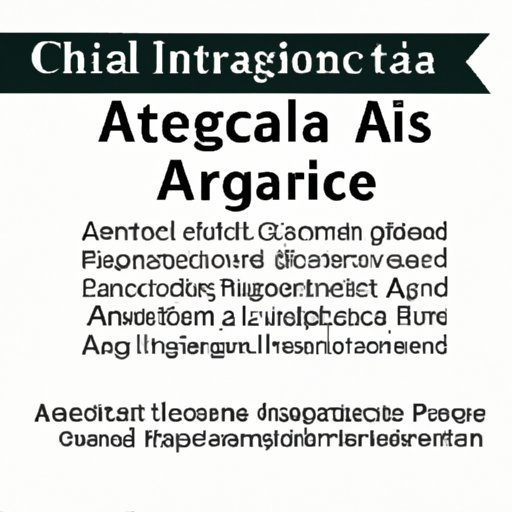
I. Introduction
Citing sources is a crucial component of academic writing, and images are no exception. Properly citing images not only gives credit to the original source but also helps to avoid plagiarism and ensure academic integrity. In this article, we will explore how to properly cite images in academic writing, including a step-by-step guide, image citation guidelines in MLA, APA, and Chicago style formats, and best practices for citing and managing image sources.
II. How to Properly Cite Images in Academic Writing: A Step-by-Step Guide
When citing images in academic writing, it is important to include specific information about the image, including the author or creator, the title of the image, the date the image was created or published, and the source. In-text citations should include the author or creator’s name and the image title or descriptive phrase, while the reference list entry should include all relevant information.
For example, an in-text citation for a photograph might look like this:
(Author’s Last Name, “Image Title”)
And a reference list entry might look like this:
Author’s Last Name, First Name. “Image Title.” Year Created or Published. Website or Database Name, URL.
It is important to be consistent in formatting image citations throughout the document and to ensure that all information provided is accurate.
III. Understanding Image Citation Guidelines in MLA, APA, and Chicago Style Formats
Each academic writing style has specific guidelines for citing images. In MLA style, for example, images should be cited with the author’s name, image title, date of creation or publication, and website or source. In APA style, the author’s name, image title, date of creation or publication, and source should be included. Chicago style has specific guidelines for citing images in different formats, such as photographs, illustrations, or online images.
It is important to consult the specific style guide for your academic writing project to ensure that image citations are formatted correctly. When in doubt, consult with your instructor or a style guide manual for guidance.
IV. Everything You Need to Know About Citing Images in Your Research Paper
When including images in a research paper, it is important to cite them properly. Photographs, illustrations, graphs, maps, and other types of images all require citation, even if they are included in your own work. When citing images, it is important to locate all relevant information, including the author or creator, the date the image was created or published, and the source.
When using images that are not your own, it is important to include attribution and to check for any copyright restrictions. Creative Commons licenses and public domain images are great resources for images that can be used freely without copyright restrictions.
Additionally, using captions can be a helpful way to provide context for images within a research paper. Captions can include information about the author or creator, the date of creation or publication, and the source, as well as contextual information about the image itself.
V. A Comprehensive Guide to Citing Images: Tips, Tools, and Best Practices
Citing images can be a time-consuming process, but there are tools and best practices that can make it easier. There are online tools available, such as Citation Machine and EasyBib, which can help to create properly formatted citations.
It is also important to keep track of all sources and citations as you work on your research paper. Storing images and citation information in a separate document or folder can help to keep track of the sources you have used and avoid duplicates.
Best practices for image citation include being consistent in formatting and using accurate information. Double-checking all information and citations for accuracy can help to avoid errors and ensure academic integrity.
VI. Avoiding Plagiarism: Proper Image Citation Techniques for Authors
Failure to properly cite images can constitute plagiarism, which can have serious consequences in academic writing. It is important to ensure that all images used in a research paper are attributed to the original source. Proper citation of images can also help to avoid accidental plagiarism, in which images or information are used without attribution due to oversight or ignorance.
Proper image citation techniques include consulting the specific style guide for your academic writing project, checking for copyright restrictions, and being mindful of common errors, such as misspelling author or creator names or incomplete publication information. Taking the time to properly cite all sources and images aids in academic integrity and strengthens the research presented.
VII. Conclusion
In conclusion, citing images is a crucial component of academic writing. Properly citing images not only respects the original source but also helps to avoid plagiarism and ensures academic integrity. By following these tips and guidelines, authors can ensure that images are cited accurately and consistently, helping to strengthen their research and avoid unintended plagiarism.
We encourage authors to consult specific style guides for image citation guidelines and utilize online resources to make the citation process easier and more efficient. By being mindful of image citation and academic integrity, writers can enhance the quality and credibility of their research.
We hope this comprehensive guide provides a useful overview of how to properly cite images in academic writing.





